According to a recent OECD report, Ireland currently has one of the highest instances of mental health in Europe with 18.5% of Irish people saying they live with a mental health disorder - such as anxiety, bipolar, schizophrenia, depression, or alcohol or drug use - in 2016.
It's not hard to see why. Soaring rental rates, increased pressure on younger people to achieve loftier aims with fewer resources in less time, the influence of social media and climate change are just a few reasons well-documented in newspapers and magazine essays.
More pernicious causes, like trying to build the life you want, subtle and unexpected changes to family structures or friend groups, or feeling like you’ve lost direction in your life loom in the shadows too.
Anxiety affects many people all over Ireland - here are ten tips to help you manage it: https://t.co/mxavbZQXll #YourMentalHealth pic.twitter.com/XPo6w3KiiH
— HSE Ireland (@HSELive) April 12, 2019
They say naming the thing that haunts you strips it of some power, but what about defining it? Anxiety, according to Mental Health Ireland, is "a type of fear usually associated with the thought of a threat or something going wrong in the future, but can also arise from something happening right now".
Just reading that made me anxious.
While there are no definite figures for the number of people in Ireland who live with a form of anxiety disorder, it is estimated that it affects one in nine people during their lifetime. Often called the "flight or fight" response, it creates a feeling of dread that seems to demand movement, action, while also stripping you of the ability to actually do that. Like sitting in a waterlogged boat, except your paddle is a comically large noodle.
It’s also worth noting that anxiety is an altogether natural feeling, something that we all experience at some point, the trickling brook that keeps us going to interviews, meetings, filling in forms on time and paying bills. It just so happens that some of us struggle to tread water all the time.
Boxing 101
The first stumbling block is getting the gloves on. One hand in, strapped into place, and-- oh no, I can’t tighten the other one. My fingers have been replaced with a bulbous mass of cushion. Megan Kelly, a personal trainer at énergie Fitness and longtime boxing enthusiast, skips to my aid, pulling the strap into place before picking up the red and black pads.
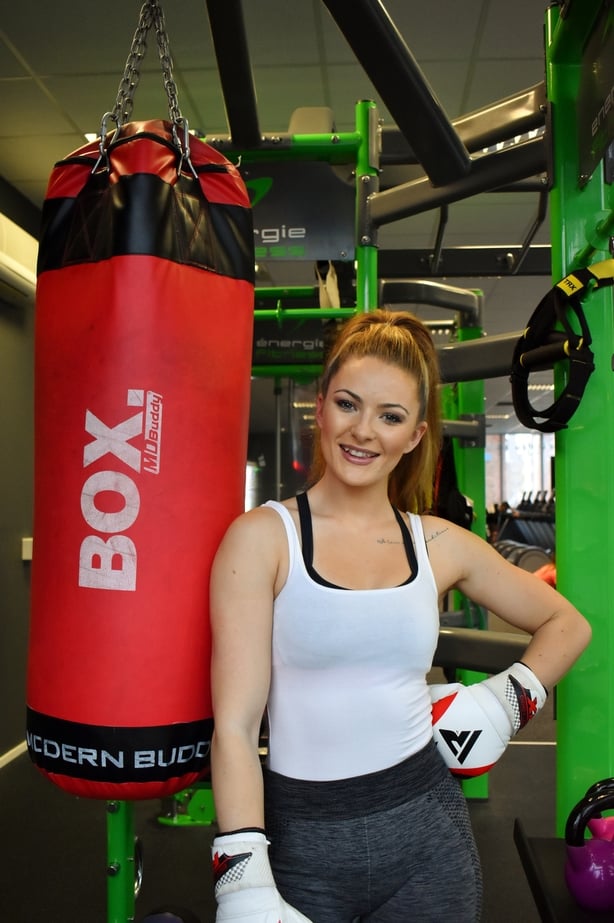
We are boxing. I fist bump myself, like Rocky.
Boxing has emerged as one of the most popular forms of fitness in recent years, fanatically loved by celebrities (Gigi Hadid, Vogue Williams, Ellie Goulding) and ordinary people alike. Boutique boxing studios have opened across the world, from LA to Bangkok, and with London’s stylish neon-lit KOBOX leading the charge. Boxercise can be found on the class timetables of most gyms, while HIIT boxing is one of the most efficient workouts out there, attracting hoards of time-strapped clients to their sweaty classes.
Ireland has a fierce boxing culture of its own, not least in thanks to our world-class stars like Katie Taylor and Conor McGregor, who has made legends out of the SBG, Ireland’s leading Brazilian jiu-jitsu and Mixed Martial Arts gym, where the latter trained. There are currently over 300 boxing clubs in Ireland, and at the Olympics, it is the sport we shine brightest at. There’s also the stereotype of the "fighting Irish" to contend with, fists up, chests out, always ready to throw a hook.
But more and more people are hailing the benefits of boxing not just for their bodies, but their minds. Of course, it brings the usual flush of endorphins any rigorous exercise will, but hidden in the footwork, jabs, and uppercuts is what many find is a powerful way of managing anxiety.
"It’s hitting", says Renata Bennet, the co-owner of Underdog Boxing, which she founded with her husband Karl, a professional and an IABA certified boxing coach, former boxer and a national champion in full-contact kickboxing. We’re sitting in the sunny reception of the studio, under an industrial-style light fixture that Renata has just designed herself and is very excited about.
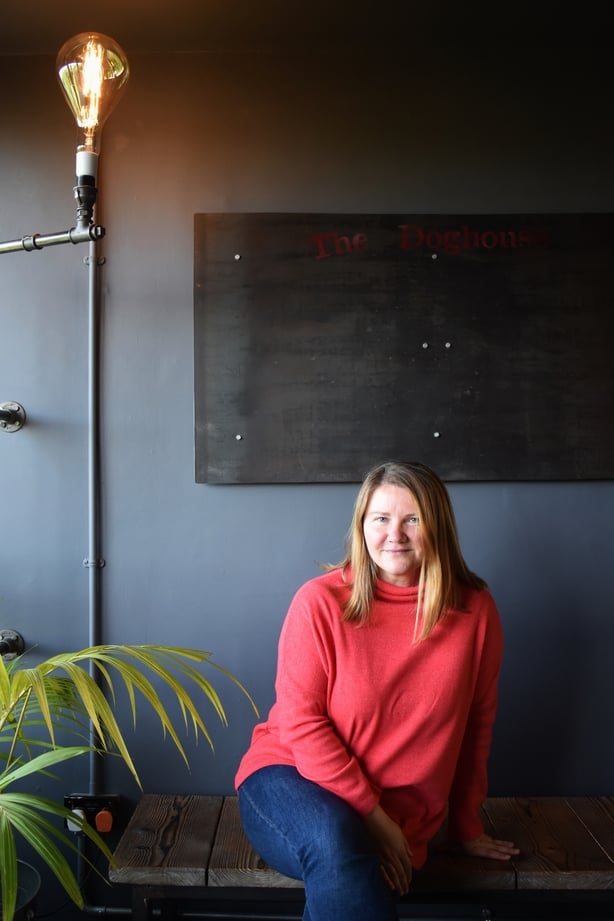
In the studio next door, Karl and coach David prepare to take me through some routines, interview-shy Karl more softly spoken than a bee in a church, and radiating a gentleness that defies his fighter's build, David seemingly in constant motion, agile and quick to tease Karl, who trained him as a boy. They move as one in the ring, Karl barely moving as David pummels the pads with deafening crashes, and the ring feels more like a playpen, with the Dublin Mountains visible through the windows.
"It’s literally the force that’s in you and you can channel it through your fists and hit something. It’s like when you are stressed out or upset and you just grab the old plates that you do not want and you throw them against the wall! Instead of throwing stuff around here, we hit the bag!"
It sounds too simple to be true, though, and in some ways it is. The mental workout plays a huge role. "It’s very much like a chess game. You need to figure out your opponent while doing endurance and being quick on your feet", she adds.
Megan Kelly, who has been in boxing from a young age and plans to compete professionally, agrees.
"If you're in boxing you have coordination to be thinking about, you’ve got your steps to be thinking about and if you’re thinking about something else in your head, then you’re going to get hit by your opponent", she says.
"If you want to get away from whatever is going on in your head, it is so good because you’re not thinking about anything apart from that."
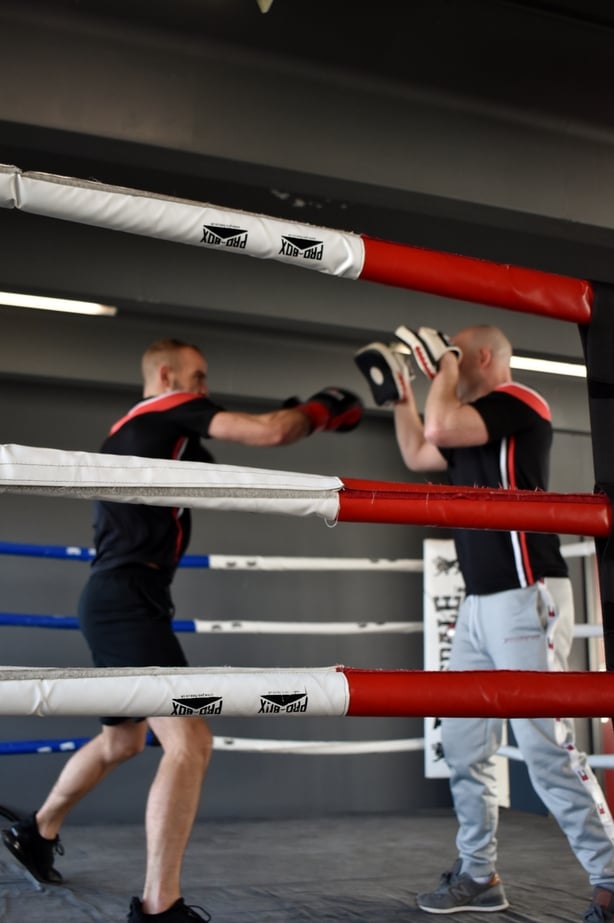
The pads
We start on pads, left punch to my right, right punch to my left. Megan adds combinations, a hook from the right, an uppercut from the left, a satisfying lean backwards before finishing with an explosive right punch. We go faster, the room fades to black as I try not to trip over my feet, moving in a slow and steady circle.
Lying down in crunch position, Megan calls out numbers, asking for the same amount of punches with each sit up. Suddenly, all I see are the numbers on the pads, the 1, 2 asking me to do something very simple: Hit. My focus narrows, body taking care of the task at hand, mind free to bark simple orders: hook, uppercut, lean, step.
Enormous pressure
Karl and Renata started their business five years ago, seizing on a gap in the market for boutique boxing classes that could offer busy people an efficient workout - 1,000 calories burned per class, depending on your fitness. Due to this, and their location in the city centre, Renata says it’s "pretty much now the elites" coming to them: the CEOs, the solicitors, those in high-level management.
"We get a lot of people who are in IT companies, especially in sales, where they have to meet targets and it’s very stressful for them. So they do come in, some of them, at lunchtime and they hit the bag like there’s no tomorrow."
It’s this demographic that in many ways so suits a sport like boxing: time-strapped and with money, but shouldering enormous pressure.
"After they finish university they all think they’re going to be CEOs, they’re all going to be right there and they throw themselves into it", she says. "Incredibly ambitious young people but they never actually counted on the stress that it comes with.
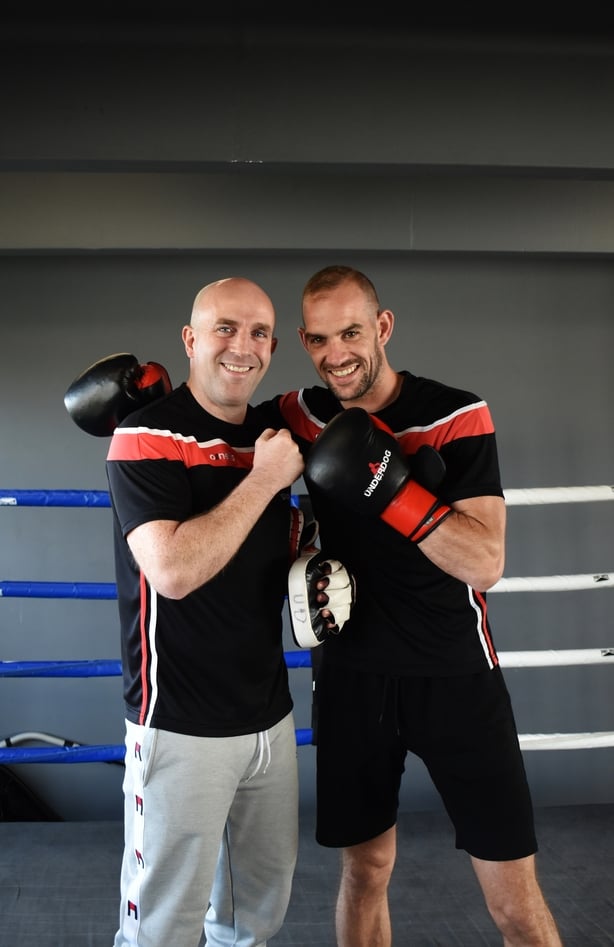
"Loads of them would be doing really well in sales or young solicitors or accountants and they're working up the corporate ladder to become partners or for promotions. So they have everything, but it came with a huge amount of stress."
Expression
For some, boxing can seem like a masculine sport, an assumption not helped by one of its most successful champions - McGregor - also being one of its most vocal and demonstrably macho. Renata says that while they get many female clients, they often come with the same question: "Are there girls here or are they all guys?"
Igor Khmil, the founder of Smithfield Boxing Club, deftly counters the assumption that boxing is a "macho" sport, and says that while his club has more male than female members, "that gap is narrowing".
"[Boxing] is a sport in which being powerful, agile, quick-thinking, strategic, aggressive and forward-going are key", he says. "If some people choose to define these as male, or macho traits, they need only to watch Katie Taylor, Kellie Harrington and our own Ciara Walsh in the ring to know that these qualities, crucial for success in boxing, are not 'macho.’"
That said, it is true that it offers men, and especially young men, with a safe environment to channel emotions they might have difficulty expressing.
Kelly has seen this in her years of training. "It takes people off the streets from maybe doing something bad whereas they’re actually in a safe environment with people that want them to succeed."
"I think for young boys, it does a lot. If I had a child I would 100% put them in boxing for discipline and respect because you see it in all the young boys."

Khmil agrees, saying: "For young men in particular, it can be a way to develop frameworks of positive thought and behaviour, and grow a support network in which they can speak freely about any challenges they may face, mental health and otherwise".
Community is a vital part of this, the figurative and literal boxing ring becoming a safe space for so many. On the night Khmil gets back to me, the club is doing weigh-ins for 57 teams of boxers for their international tournament, a hub of activity and support.
"Our club is very much a family, offering unconditional support, win or lose, during success or setback", he says. "That sense of inclusion also creates an openness in discussion of mental health and wellbeing matters."
By hook or by crook
That said, I am a woman being trained in boxing by a woman, so it is resolutely not a macho sport. Renata, who also boxes, finds that when it comes to women there is the added pressure of social media, the ever-present push to look a certain way. Often, she finds herself coaching these women in another sense.
"You see it in the girls who are in their mid-20s and their very early 30s that are maybe Instagram famous people and that pressure to be in shape, to look good, and sometimes we just have to tell them, ‘What you hear, what you see is not really reality. These are airbrushed, these are put through I don’t know how many filters. Take your time to get in shape, don’t kill yourself.’"
The coaches become counselors, and by hook or by crook, they indirectly tease out many of their clients' worries.
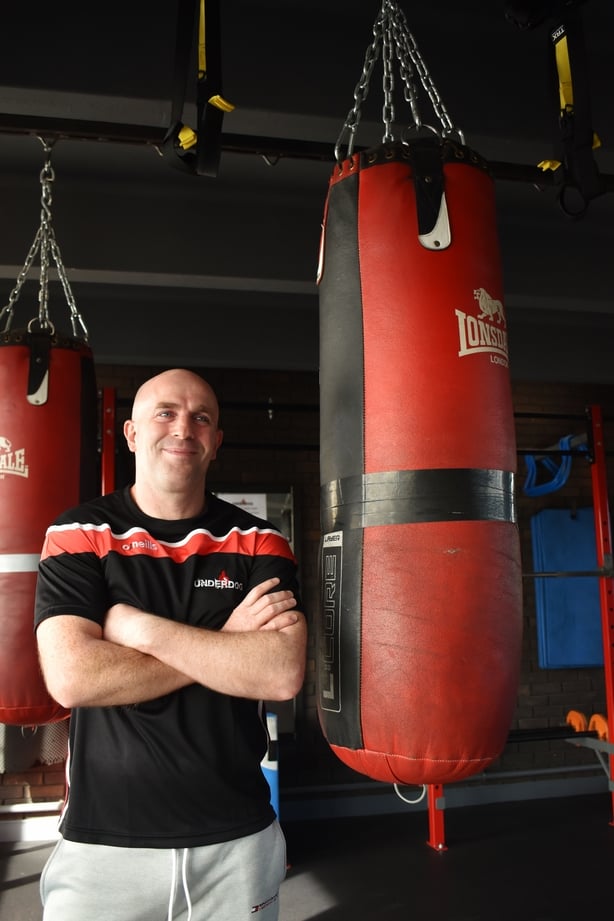
"You hear stories", Renata says, "especially when it comes to the one-to-one coaching and they have the entire place to themselves and the coach."
She says she sees in their posture: the hands go to the hips, the head falls. They sigh, from a different kind of exertion. "You know that this is not only physical. It’s more mental."
That is, she says, when you hold the bag for them, say "lift the arms", "keep it up", "you’ve got this".
You can hit harder
There’s a new toy to play with, an agility ladder, laid out on the floor of the studio. We’re doing footwork. "It’s like a dance", Megan tells me, dipping low and smooth with each step, leading with the left foot, following with the right.
I try to match her pace, telling my feet to move in time to the music, to flow seamless between movements. Soon, I’ve found my pace. Next, it’s pads again, but I’m allowed to hit hard this time.
Left fist up to protect my face, right foot back to stabilise me, Megan says I can hit harder, so I do. Moving in time with me, each punch lands on Megan’s pads with a thunderous crash, and it feels a little like I’m fist bumping Rocky Balboa himself.


